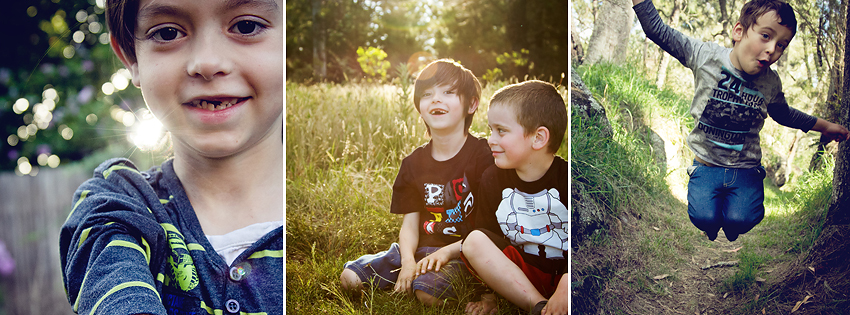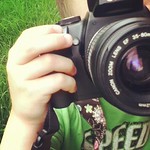National EOS Awareness Week and our story.
“It’s called Eosinophilic Oesophagitis”. The Gastroenterologist sat next to me in scrubs, holding a piece of paper which had the images from my son’s endoscope printed on it. I didn’t have a medical degree, but I could tell that it looked painful. The words entered my brain, but there was no reference point so they just bounced around with no meaning. I had never even heard of that before. What does it mean?
“It happens sometimes when the body reacts to a protein, and attacks the food instead of digesting it”, he explained further. “You can see here where the oesophagus is quite swollen, this means that food is not getting into his tummy properly”.
“Oh” was about all I could manage in reply. He smiled and told me not to worry; he would give me more details when he was done in surgery for the day. He left me with the pictures and disappeared back into theatre.
I sat in the corridor of John Hunter Children’s Hospital trying to process the new information. It had taken 3 years, 4 different doctors and a 400km drive to finally get here in our search for answers. Now it seemed that the answer had simply given us more questions. As I waited for Lachlan to wake up from the general anaesthetic I tried to take a few deep breaths and relax. He had said not to worry, he was happy we had an answer. I rang my husband to let him know how it had gone. I spelled it out over the phone: e-o-s-i-n-o-p-h-i-l-i-c … Gosh, this sounds as though it might be something serious.
Then the anaesthetist came to tell me Lachlan was waking and I could go into recovery to see him. He looked so fragile, laying in the hospital bed with no awareness of what was happening. As he began to come around he became distressed and disoriented. I tried to hold him but he kept pushing me away. His throat hurt from the procedure and he kept gagging and saying he couldn’t swallow. It’s in moments like these as a mother that you question whether putting your child through an ordeal like this is really worth it. It took at least an hour before Lachlan was feeling himself again. Some jelly and a trip to the Starlight Room had done the trick.
After lunch, our gastroenterologist returned to talk some more about this condition I had never heard of. I had been trying my best to pronounce it in my head but I was sure I was getting it wrong. He explained that eosinophils are a kind of white blood cell the body produces to fight bacteria and parasites. For an unknown reason, people with eosinophilic oesophagitis produce a large number of these cells in the digestive system when having a kind of allergic reaction to certain foods. This in turn results in swelling and pain. We had already suspected that Lachlan might be lactose intolerant, so we were half way onto the right track. However EoE or EE, is a reaction to the protein components of food specifically, so we would need to stop all milk products not just lactose. He gave us a few fact sheets, made a date for a follow up visit and the next day we travelled 400kms back home again. I was right, our trip in search of answers had become a trip of even more questions.
Lachlan was 7 and a half. He is an extremely intelligent boy and has always been ahead on the learning development scale. He was a happy, laid back baby. He hardly ever cried, he grew at a normal rate, I breastfed him for 2 years with no issues whatsoever. By the time he was 2, he had been hospitalised twice for severe asthma. By the time he was 4, it had become pretty apparent that he was a picky eater. By age 5 when he started school, we knew he was smaller than most boys his age. By the time he was 6, we knew something was really wrong. He was no longer growing at all. He would hardly eat a thing. Meal times were drawn out, stressful ordeals of trying to force him to swallow every mouthful. He would complain about not liking things to the point of gagging and vomiting. We took him to our Paediatrician who tested him for Coeliac Disease. The blood tests showed that he did not have any of the usual serum indicators for coeliac, but he did have low levels of Immunoglobulin A; a protein related to eczema, asthma, allergies and mucous in the gut. So at this point, we were advised against an endoscope.
Time went on, and it became more and more evident that something was not right. He became lethargic, he still would not eat. He still would not gain weight. When he reached 7 and half years old, and only 18.7kgs in weight, we were finally referred to Newcastle for the endoscope.
I thought about all of this on our drive home. Why had it taken so long? How could I have missed all these signs? It was like I had been staring at a jumbled up puzzle, and now all the pieces were almost locked into place.
So naturally, the first thing I did once I was home, was to google it. And the more I googled, the more confused and overwhelmed I became. It’s not as simple as he is allergic to Food A or Food B. EE kids can be allergic to many foods. In fact, they are almost always reactive to more than one and no two cases are the same. The condition causes a large amount of pain and discomfort, from something as simple as eating a sandwich. Can you imagine that, being doubled over in pain from an act so basic as eating? This was quickly becoming terrifying. It is not uncommon for EE kids to require nasal feeding tubes or gastro PEGs for nutrient based feeding because there is so little food they can eat.
And then I discovered an invaluable help. I stumbled upon AusEE, “a charity dedicated to improving lives affected by eosinophilic disorders”. I was ecstatic! I was even happier to discover they also had an online support network. I cannot tell you how relieving it was to be able to speak with people experiencing the same thing; people who didn’t stare at me like I was speaking Klingon as soon as I said the word ‘eosiniphilic’; people who have also had to fight to get answers and face the pain of watching your child struggle to eat. The resources, support and help that I have gained from AusEE can’t be measured. It has made dealing with a strange and scary condition so much easier.
So to celebrate National EOS Awareness week 2012, I share our story with you. I also urge you to donate to raise funds and support this amazing network.
Our journey with EE is far from over. In fact, it will never be over. But Lachlan is doing much better. We are still experimenting with foods, and in general he is feeling great. It’s a long complicated road, but thanks to AusEE, we don’t have to walk it alone.








Wow. That is all. Big hugs to you all, glad you have answers and a support network in place.
Thanks Becky, it’s been a big year for us! He was diagnosed at the end of March.